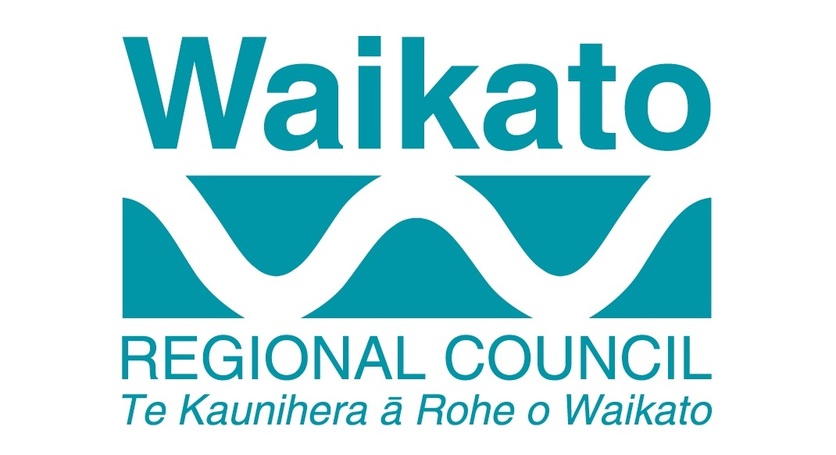Rivers and Us is a Waikato Regional Council (WRC) initiative to help teachers, students and communities investigate the water in their local area. It explores how people use water and the effects of these uses on water quality.
About Rivers and Us
Rivers and Us is underpinned by the key dimensions of environmental education:
- Education in the environment – using water monitoring and other outdoor activities to develop science capabilities.
- Education about the environment – developing scientific content knowledge.
- Education for the environment – engaging with science to take action as part of the local curriculum.
Integrated throughout Rivers and Us are key aims of environmental education:
- Kaitiakitanga – awareness and sensitivity to the environment and related issues.
- Knowledge and understanding of the environment and the impact of people on it – including mātauranga Māori.
- Attitudes and values that reflect feelings of concern for the environment.
- Skills (capabilities) involved in identifying, investigating and problem solving.
- A sense of responsibility through participation and action.
Science concepts and curriculum links
The resources featured in Rivers and Us explore Planet Earth and Beyond and Living World concepts:
- The Earth has a limited amount of freshwater, and it is continuously recycled.
- Water goes through physical changes as it moves through the water cycle. The changes are powered by heat from the Sun.
- River catchments are part of the water cycle.
- Natural features can be changed by human actions.
- Earth’s resources are affected by human actions.
- Living things are suited to their particular environment.
- Living things depend on each other and on the environment in which they live.
- Changes in any part of an environment affect the relationships between the plants and animals that live there.
- Changes in any part of an environment can hinder or improve the chances of some species surviving.
Freshwater monitoring
Rivers and Us includes an emphasis on freshwater monitoring and taking action to protect/enhance water quality in your local area. Monitoring stream health takes you step by step through water quality monitoring and assessment. Ideally, students will use this data to inform subsequent action.
Resources to support learning
The Hub has created a suite of wraparound resources for teaching Rivers and Us:
- Rivers and Us – introduction – article
- Water in the Waikato region – article
- Water catchments – article
- Water quality – factors and issues – article
- Water quality monitoring – article
- Dairy farming solutions – article
- Horticulture solutions – article
- Urban solutions for water quality – article
- Waikato Regional Council – article
- Ngāti Hauā Mahi Trust – article
- Our use of water – impacts on water quality – interactive
- Land use – impacts on waterways – interactive
- Wai Māori – interactive
- Learning about the water cycle – interactive
- Water flows and catchments – interactive
- Water quality indicators – interactive
- Stream health monitoring and assessment – interactive
- Inquiry and action learning process – interactive
- Follow the water droplet – activity
- Water cycle models – activity
- Mapping water at my school – activity
- Mapping my local water catchment – activity
- Build a model water catchment – activity
- Wai words – activity
- Monitoring stream health – activity
WRC Rivers and Us resources in downloadable PDF format:
- The Water Cycle
- The Water Cycle (unlabelled)
- The Water Cycle in Use
- The Water Treatment Process
- The Waste Water Treatment Process
- Water Use Amounts
- The Stormwater Problem
- What Happens to the Water Used to Wash a Car?
- Waterways of the Waikato Region
- Māori Views of the Waikato River
- Discussion Cube Prompts
- Freshwater Monitoring – Clarity Tube
- Freshwater Monitoring – Periscope Viewer
- Freshwater Monitoring – pH
- Freshwater Monitoring – Temperature
- Freshwater Monitoring – Conductivity
- Freshwater Monitoring – Water Flow – Velocity
- Freshwater Monitoring – Macroinvertebrate Identification Sheet
- Freshwater Monitoring – Macroinvertebrate (Bug) Sampling
- Freshwater Monitoring – Bug Food and Stick Races
- Freshwater Monitoring – Habitat Assessment
- Freshwater Monitoring – Stream Health Monitoring Data Recording Sheet
Related content
In this recorded webinar Alex Daniel from the Waikato Regional Council shares her approach to planning for a successful stream monitoring experience.
Tōku awa koiora – introduction curates resources about the Waikato River ecosystems and the iwi, researchers and scientists who are working to restore and protect the health and wellbeing of the Waikato River.
Smart Water – a context for learning curates resources that foster a greater understanding and appreciation of water from source to tap. Smart Water is a partnership between Hamilton City Council, Waipā District Council and Waitomo District Council.
Repo (wetlands) – a context for learning explores wetland connections and wetland restoration using a te ao Māori approach. Use a similar inquiry and action learning process that has wetlands as the context for learning.
Lakes380 – a context for learning curates resources that explore lake health past and present and draw upon both scientific and mātauranga Māori knowledge systems.
For a closer look at dairy farming, its impacts and its innovations to help reduce greenhouse gas emissions, check out Dairy farming and climate change – a context for learning. The interactive planning pathway in the article provides numerous starting points and resources to assist educators.
Teaching remotely and learning from home? The Learning at home – river catchments and connections collection has some simple ideas to keep students actively engaged in STEM activities.
Acknowledgement
This article has been developed in partnership with the Waikato Regional Council as part of the Rivers and Us resource.



